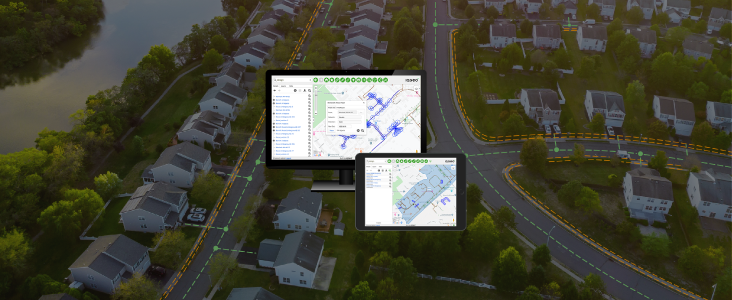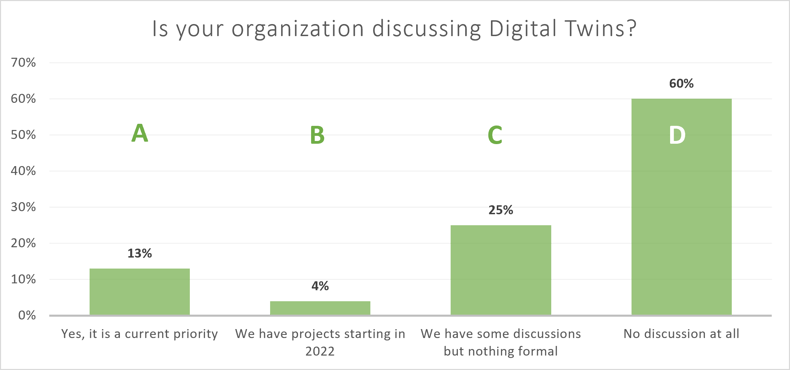With fiber rollout initiatives picking up pace around the world, the need for creating and maintaining an accurate digital twin of your fiber network is rapidly becoming critical path to business success. Currently, only 27% of UK homes are passed by fibre and the number is even lower in the US. With so much public and private funding, fiber rollout projects are accelerating dramatically. At the same time, polls show that there are few plans in place among telecom operators to create network digital twins. Why is there such a disconnect between operational and business requirements, and what benefits does a digital twin deliver?
The case for a network digital twin
A network digital twin does much more than simply provide visibility of the physical network. It keeps project progress on track by connecting tasks with the status of critical network assets. The lack of a network digital twin can cause operators to lose process control within and between different phases of the network lifecycle. For example, a project with poor network visibility will suffer from construction delays and cost overruns. There is also the likelihood of repeat truck-rolls for maintenance with increasing MTTR, as well as inefficient disaster response resulting in extended downtime. In the highly competitive broadband industry, even minor problems can cost your business its competitive edge and reputation.
To avoid these issues – and to get a trusted geospatial view of your network at all times – an accurate network digital twin is one of your greatest assets. Since so few companies in the industry effectively employ these digital twins, you’ll have a secret weapon that can transform virtually every aspect of your business.
Despite these clear benefits, companies are still shy about investing in the implementation of a digital twin. In a recent Fiber Broadband Association webinar, an audience of broadband operators were asked the following question.
Is your organization discussing Digital Twins?
- Yes, it is a current priority
- We have projects starting in 2022
- We have some discussions but nothing formal
- No discussion at all
Results from the poll were surprising, with 60% choosing option D (No discussions at all), and 25% responded with option C (We have some discussions but nothing formal). Very few were starting projects or had a network digital twin as a current priority.
The challenges to deploying a network digital twin
There are a number of considerations that are associated with the development of a network digital twin, which can be divided into a few categories:
- Large geography: Networks might be distributed over large geographical boundaries, which requires a clear plan for how to structure the scope of a digital twin.
- Reliance on contractors: Many operators are highly reliant upon contractors who are motivated by contract structures that are not always compatible with operational objectives.
- Customer growth: The race to expand networks and satisfy increasing customer demand can be an all-consuming challenge that makes it difficult for operators to plan and execute strategic initiatives.
- Technical investment: The technology required to create and maintain a network digital twin does require an investment in technology and process optimization that can be hard to justify without a team of committed champions.
While these are challenges that should not be underestimated, all of these issues can be successfully overcome, and the consequences of continuing with a disconnected, manual network management approach can make the difference between success and failure.
The benefits of a network digital twin
Implementing a network digital twin for your company can revolutionize the way you manage and monitor your network, from maximizing network revenue to process optimization. It can allow you to instantly get individual quotes and integrate your CRM software into your network operations. You’ll also have the ability to measure contractor performance more easily throughout network construction and maintenance.
However, all this is just the icing on the cake since the true value of a network digital twin is the acceleration of time to revenue and the creation of new revenue streams. A digital twin increases serviceability, optimizing your current revenue streams, and opens new income streams for your business. Not to mention, having a network digital twin can significantly increase the efficiency and effectiveness of your emergency response activities by providing live tracking and network status feedback. The benefits of a network digital twin in the fiber broadband race are clear for all to see.
Watch the Fiber Broadband Association webinar with Jay Cadman, SVP Enterprise at IQGeo, to find out more on how having a network digital twin can benefit your business.




 Previous
Previous




